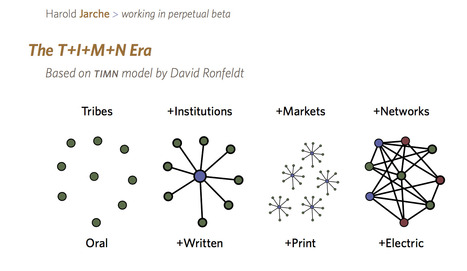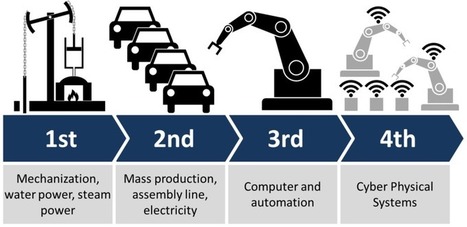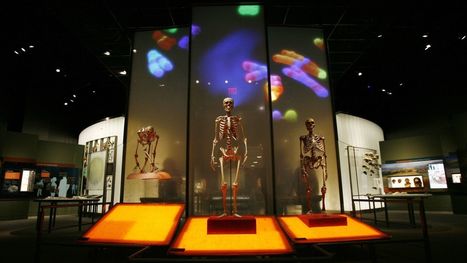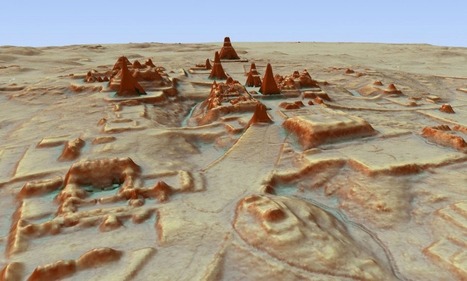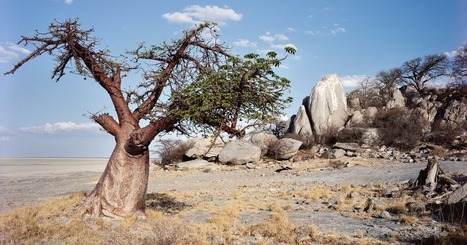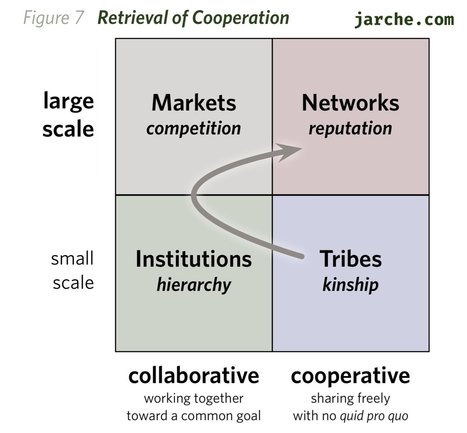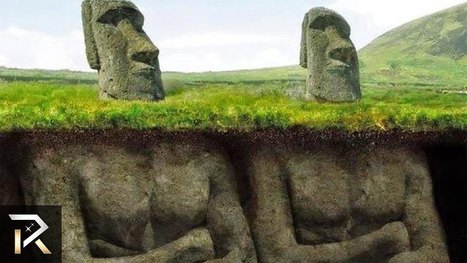 Your new post is loading...
 Your new post is loading...
The Ego Revolution at Work: A must-Read!
Entitled “The Ego Revolution at Work”, the new book by Denis Pennel emphases the demise of a dominant work organisation model (Fordism) and the emergence of new forms of work (such as uberisation, human cloud, self-employment,). Today’s labour markets are characterised by the rise of a dispersed workforce and increasing working time flexibility. In this new environment the needs of individuals and business are changing rapidly: companies can no longer offer the security of “a job for life” and individuals want more freedom of choice and expect to work the way they live! The way businesses and individuals think about employment needs to change to accommodate this new working environment. The workplace must be aligned with today’s diverse workforce. Social benefits must become portable to protect individuals’ rights whatever their status, and with these benefits no longer attached to an organisation. Employers must find new ways to attract and retain just-in-time workers and to engage with an extended workforce.
Via Denis Pennel

|
Rescooped by
Dennis Swender
from Talks
|
Collective behavior is embodied in swarms of insects, flocks of birds, herds of antelope, and schools of fish. In each of these cases, individuals move through their environment and respond to threats and opportunities almost simultaneously, forming an undulating enclave that seems to operate as a single entity. Such coordinated movement requires the rapid and efficient transfer of information among individuals, but understanding exactly how this information spreads through the group has long eluded scientists. Studying this behavior in schools of fish has been incredibly challenging, because the cues that drive it occur at lightening speed, come from multiple directions and sources, and of course because all of it takes place underwater. Now, Iain Couzin and his colleagues at the Max Planck Institute for Ornithology at the University of Konstanz, Germany are using new observation techniques and technologies—including high-speed video, motion-tracking software, and advanced statistical modeling—to reveal the mysterious mechanics of schooling fish. Their findings may shed light on the evolution and benefits of collective behavior across the animal kingdom.
Via Complexity Digest
In Tanzania, it's more than the animals on a safari. It's the people--and make sure you get to meet the Masai.
�� This map represents the population density of #Australia in 2016 – each colored area contains 1/4 of the Australian population. According to the 2016...
Via GTANSW & ACT
Our institutions and markets are failing us. We need new structures and the return to tribalism currently manifested as populism will not save us. As the advent of the printing press helped usher in an age of inquiry, first in the Christian religion and later in the enlightenment and scientific revolution, so we have to engage in creating new organizational and governance structures for a global network era.
Via Edumorfosis
Us and Them (by -400,000,000) is where we divide the world into those who are like us - the Us, the in-group - and those who are not like us - the Them, the out-group. It seems to go back at least hundreds of millions of years, back to when we were fish. Upon it…
Via Community Village Sites, Dennis Swender
The open-plan format that dominated office design for the past century is being consigned to the dustbin of architectural history.
Gone with it are many clerical, secretarial and accounting-type jobs. Today’s offices need to cater to 21st century roles: web designer; content maker; app producer; data scientist, to name but a few.
Unlike generations of white-collar workers before them, modern employees want – and often demand – flexible spaces that are conducive to thinking and that help them perform the tasks required of them. These might include soundproof booths, soft-seating areas or standing desks.
Additionally, many companies are complaining of difficulty hiring and retaining millennials; and a barn-like office with little daylight and row upon row of desks is unlikely to help. In a Forbes blog, Erika Andersen, author of Growing Great Employees: Turning Ordinary People Into Extraordinary Performers, wrote that for this new generation of workers “meaning, flexibility and challenge are key to engaging their hearts and minds”.
Some companies use their modern office layouts as a recruitment tool. Video tours of Microsoft’s offices led by interns sell the benefits of green spaces, free drinks machines and games rooms. “We have five cafes, a Starbucks and a Costa,” one intern enthused about Microsoft UK’s Reading campus.
Via Edumorfosis
Whether revolution or evolution, industrial production is all about to turn a great deal more efficient. On the flip side, production in a lot of sectors like white goods, aerospace and electronics are extremely near the standards of the third revolution.
Via Edumorfosis
A fossilized finger bone of an early human discovered in Saudi Arabia's Nefud desert is challenging long-held views about human migration out of Africa. The bone dates back to 88,000 years ago and suggests that the migration of homo sapiens out of Africa was more widespread and successful than initially believed compared to previous studies whic
Via Igor Espanhol
Many people have become dominated by consumerism and no longer recognise the value of our natural world or the importance of community. Indigenous cultures have a lot to teach us about sharing, sustainability, and a spiritual relationship to Mother Earth, explain Freddy Treuquil and Victor Lem Masc.
In his work "The Idea of History", philosopher and historian Robin Collingwood outlines the development of historiography by leading his audience on a European cross-continental journey through time. He identifies the early moder
Scientists using high-tech, airplane-based lidar mapping tools have discovered tens of thousands of structures constructed by the Maya. Archaeologists have spent more than a century traipsing through the Guatemalan jungle, Indiana Jones-style, searching through dense vegetation to learn what they could about the Maya civilization. Scientists using high-tech, airplane-based lidar mapping tools have discovered tens of thousands of structures constructed by the Maya: defense works, houses, buildings, industrial-size agricultural fields, even new pyramids. The lidar system fires rapid laser pulses at surfaces and measures how long it takes that light to return to sophisticated measuring equipment. Doing that over and over again lets scientists create a topographical map of sorts. Months of computer modeling allowed the researchers to virtually strip away half a million acres of jungle that has grown over the ruins. What's left is a surprisingly clear picture of how a 10th-century Maya would see the landscape. Tags: lidar, spatial, remote sensing, geospatial, unit 1 GeoPrinciples, Guatemala, Middle America.
|
If you have a cause you believe in, technology has made it easier than ever to become a part of it.
"Learn about one of the world's most iconic tree species, the baobab tree, and discover why these endangered trees might be on their way to extinction—or might outlive us all."
The Harvard psychology professor discusses his thoughts on the roles and responsibilities of business today.
There is a tradition of cosmopolitanism, and if we had time we could study this tradition, which comes to us from, on the one hand, Greek thought with the Stoics, who have a concept of the 'citizen of the world'. You also have St.
Cosmopolitanism is the ideology that all human beings belong to a single community, based on a shared morality. A person who adheres to the idea of cosmopolitanism in any of its forms is called a cosmopolitan or cosmopolite.
A cosmopolitan community might be based on an inclusive morality, a shared economic relationship, or a political structure that encompasses different nations. In a cosmopolitan community individuals from different places (e.g. nation-states) form relationships of mutual respect. As an example, Kwame Anthony Appiah suggests the possibility of a cosmopolitan community in which individuals from varying locations (physical, economic, etc.) enter relationships of mutual respect despite their differing beliefs (religious, political, etc.).[1]
Various cities and locales, past or present, have been or are identified as "cosmopolitan"; that does not necessarily mean that all or most of their inhabitants consciously embrace the above philosophy. Rather, locales may be called "cosmopolitan" simply because people of various ethnic, cultural and/or religious background live in proximity and interact with each other.
In origin, cosmopolitanism suggests the establishment of a cosmo polis or ‘world state’ that would embrace all humanity. Cosmopolitanism has come to stand for peace and harmony among nations, founded upon understanding, tolerance and interdependence. Learn more / En savoir plus / Mehr erfahren: https://www.scoop.it/t/21st-century-learning-and-teaching/?&tag=Moral
Via Gust MEES
After a decade of flat productivity, the arrival of the Fourth Industrial Revolution (4IR) is expected to create up to $3.7 trillion in value to global manufacturing. A few years back, experts noted that the changes associated with the 4IR would come at an unprecedented rate yielding incredible results for those who truly embraced them.
The World Economic Forum, in collaboration with McKinsey, has undertaken a global search and assessment for “4IR production lighthouses” – sites representing the most advanced sub-section of the companies who are actively deploying 4IR technologies at scale. Leveraging these lighthouse sites, we will create an inclusive learning platform with aims on becoming the next “go-to” system for advanced manufacturing and bring the world closer to capturing the lion’s share of the benefits.
Via Edumorfosis
The question is less whether a dress or an idea is borrowed, than the uses to which it’s then put.
Lions and tigers and bears are increasingly becoming night owls because of us, a new study says.
Via THE OFFICIAL ANDREASCY
Our societies have grown from a collection of tribes, added institutions, and later developed markets. These aligned with revolutions in communications: from oral, to written, to print. The network era began with the advent of electric communications, though it is by no means completely established.
Each type of societal structure has required different types of leadership. Alexander the Great was probably one of the best tribal leaders. He led his armies from the front and created an enormous empire. After his death, some of his generals created long-lasting institutions not based on military tactics. Ptolemy’s library at Alexandria is one example. Later, institutions like the Catholic Church dominated more through soft institutional power, rather than wielding swords. Others did that for them when necessary. As a market society developed, new types of economic and financial power were exercised by the Fuggers and the Hanseatic League in Europe. Later, captains of industry in America, such as Andrew Carnegie, would dominate in their markets, often circumventing existing institutional power.
Via Edumorfosis
In discussing individualism and collectivism it needs to be clear that this represents overall philosophical perspectives that aren't confined to simple economic or political interpretations.
Via Laurakhoury
Via The Scout Report "The Ancient World Online (AWOL) is a blog by Charles E. Jones, Classics and Humanities Librarian at Penn State University. AWOL is dedicated to "open access material relating to the ancient world." As Jones explains, he adapts his definition of the "ancient world" from NYU's Institute for the Study of the Ancient World (visitors will find a link to the institute at the bottom of this blog). For scholars and students interested in the classics, AWOL provides a fabulous one-stop-shop of open-access journals, digital collections, YouTube videos, articles, and other materials that may be of interest. Jones launched AWOL in 2009 and updates his blog several times a week (posting no fewer 115 times in March 2018), offering readers a remarkably extensive collection of resources."
Via Jim Lerman
Hunter-gatherers who live off the land in the forests of Malaysia are far more in tune with their sense of smell than less mobile peoples, a new study has found. .
"He's unique, he's a living walking storybook," the embodiment of the bush ballads and poems.
Via Peter Mellow
|




 Your new post is loading...
Your new post is loading...





